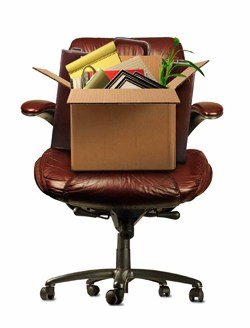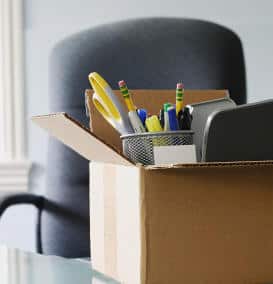
Could offices change from sitting to standing?
The human body wasn’t designed to sit for long periods. Yet millions of people have to do just that, day in and day out at work, putting undue strain on their spines and, as we’ve already highlighted in an earlier post, causing musculo-skeletal disorders which are costing the UK economy a fortune.
However, until recently, the design of the standard office desk had changed very little since it was first thought of and most of us sit at them for the majority of our waking hours.
Many think that sitting all day in the office is just what you have to do and then try to compensate for all that inactivity by heading to the gym at the end of the day. However, recent studies have shown that this is little or no compensation and, if we want to remain fit and healthy in the office, we need to be standing up more.
All the leading studies point to the fact that sitting for prolonged periods of time is bad for you and, as a result, a growing number of businesses, particularly in the US, are encouraging their employees to work at standing desks.
But when it comes to the average office, changing the way employees work can present a major challenge. There’s the overall layout of the office to be considered, first and foremost and, more importantly for many businesses still struggling with the rebound from recession, expending large amounts of cash on new furniture, when the existing desks, etc. are perfectly functional, is not an option.
Take call-centres for example. The current, most common arrangement of rigid rows of desks, maximising the available floor-space to keep overheads to a minimum is not going to suit a shift towards more flexible work stations and these are the very staff that tend to spend the longest time sitting at their desks.
So if you did want to consider switching to standing desks, what sort of expenditure are you looking at?
Prices vary widely according to overall quality and design, but expect to pay in the region of £500 plus for one of the new sit/stand desks. This is significantly more than a standard desk, which can be bought in as cheaply as £150. This represents a considerable cost to larger organisations who may have around 1,000 staff working on-site at any one time, and many small businesses simply don’t have the budget to even consider changing.
There’s also the issue of choice. Although research suggests that alternating between sitting and standing at your desk to work is beneficial to both the employees and employer, making the transition can take some time and not every employee will be keen to make that change.
Professor Alan Hedge, expert in Ergonomics at Cornell University is sceptical about how far workers can change. Some will simply want to stay sitting, he points out. Employers also have to then consider how those at the new standing desks and those remaining seated will interact. It will more difficult to encourage communication between staff if they are working in essentially different ways. As a compromise, Professor Hedge thinks employees should all be encouraged to move around much more. “We need to think of sitting like driving,” he says. “Take a break regularly. Make small adjustments that encourage people to move around more.”
This includes walking to talk to a colleague instead of emailing them, making more frequent trips to the water-cooler to keep hydrated (two benefits in one) and encouraging people to use the stairs instead of relying on the lift.
However, what might finally change things is if evidence becomes overwhelming, health costs continue to rise, and preventing employees spending too much time sitting becomes part of an employer’s legal duty of care.
In California, with its cutting-edge technology sector, standing desks have become increasingly commonplace, encouraging employees to move around and constantly change their position as the work. This can elevates the heart rate and boost circulation and there may be evidence to suggest this makes employees more productive overall. Additionally, given the height of the working surface, computer keyboards are at the right level to encourage better work habits, keeping arms perpendicular to the body while typing.
In a nutshell, it is important for all employees to mix sitting and standing. Those who spend long periods of time sitting at their workstation should get up at regular intervals and move around the office. Those working in a standing position need to rest at intervals by sitting. It’s all about striking the right balance.
For now, standing desks are relatively uncommon in the UK, but it’s clear that, if the incidence of musculo-skeletal disorders continues to increase, employers will be looking at finding alternatives to the traditional way of working, not only for the better health of their employees, but also for the long-term profitability of their business.

 With commercial rents still high and office budgets being tighter than ever, more and more companies are opting to implement flexible working conditions in their offices. This has also been prompted by an increase in flexible hours and part-time work and, due to improved technology, the ability of many staff to work remotely from their own home or other space away from the main office itself.
With commercial rents still high and office budgets being tighter than ever, more and more companies are opting to implement flexible working conditions in their offices. This has also been prompted by an increase in flexible hours and part-time work and, due to improved technology, the ability of many staff to work remotely from their own home or other space away from the main office itself. working after 26 weeks employment service. For many employers, this will come as good news for the simple reason that, long term, it will enable them to potentially occupy less office space and therefore reduce office overheads as a result.
working after 26 weeks employment service. For many employers, this will come as good news for the simple reason that, long term, it will enable them to potentially occupy less office space and therefore reduce office overheads as a result. s and getting it wrong could cause all sorts of problems in the future.
s and getting it wrong could cause all sorts of problems in the future. Just like moving house, moving your business can be one of the most stressful things you will ever do. There are so many things to take into account and it’s not something to enter into without a great deal of thought and planning.
Just like moving house, moving your business can be one of the most stressful things you will ever do. There are so many things to take into account and it’s not something to enter into without a great deal of thought and planning.
 The first thing to consider is how long you have had your existing chairs and whether or not they are still under warranty. Although this in itself does not determine whether or not a chair has come to the end of its useful life, it’s a very good indicator as to how long you can expect it to last. Generally, chairs with a longer warranty have proportionately greater life-span. This is because they are generally of a much higher quality in the first instance and thus will stand the test of time much better. Chairs with a 5 year warranty could be expected to last around eight years. In short, quality chairs are built to last.
The first thing to consider is how long you have had your existing chairs and whether or not they are still under warranty. Although this in itself does not determine whether or not a chair has come to the end of its useful life, it’s a very good indicator as to how long you can expect it to last. Generally, chairs with a longer warranty have proportionately greater life-span. This is because they are generally of a much higher quality in the first instance and thus will stand the test of time much better. Chairs with a 5 year warranty could be expected to last around eight years. In short, quality chairs are built to last. Create a Suitable Reception Area for Your Business
Create a Suitable Reception Area for Your Business e you noticed how the working day seems to be getting longer?
e you noticed how the working day seems to be getting longer? Consequently, the amount of rubbish we produce is growing every day and, unfortunately, we are quickly running out of space in which to put it. It’s becoming increasingly obvious that we cannot sustain our current throw-away lifestyle and need to reassess what we do with our waste. However, there are so many things we dispose of that could, and indeed should, be salvaged and put to good use.
Consequently, the amount of rubbish we produce is growing every day and, unfortunately, we are quickly running out of space in which to put it. It’s becoming increasingly obvious that we cannot sustain our current throw-away lifestyle and need to reassess what we do with our waste. However, there are so many things we dispose of that could, and indeed should, be salvaged and put to good use. So why not do your bit to reduce this impact on the environment by re-using existing furniture rather than buying new? It will drastically reduce your Carbon footprint and improve your green credentials. Think about it.
So why not do your bit to reduce this impact on the environment by re-using existing furniture rather than buying new? It will drastically reduce your Carbon footprint and improve your green credentials. Think about it.